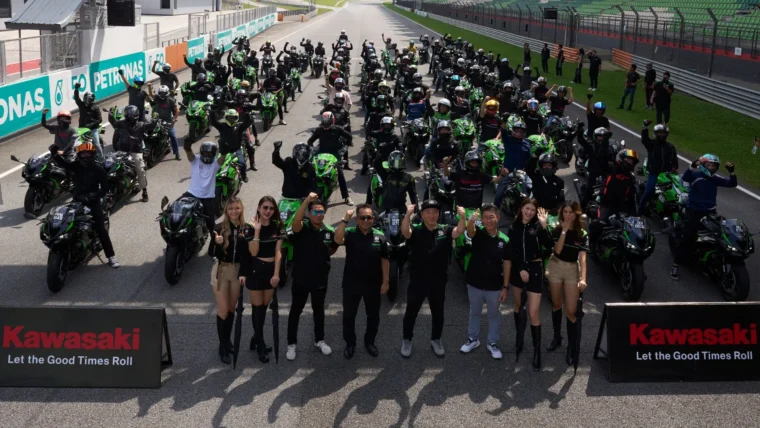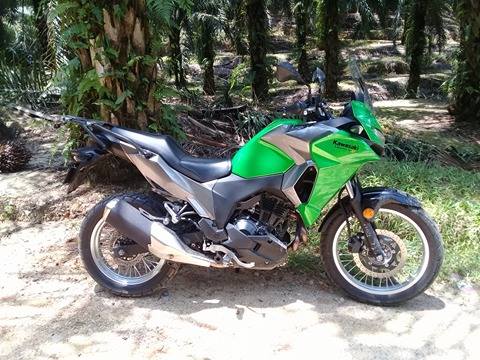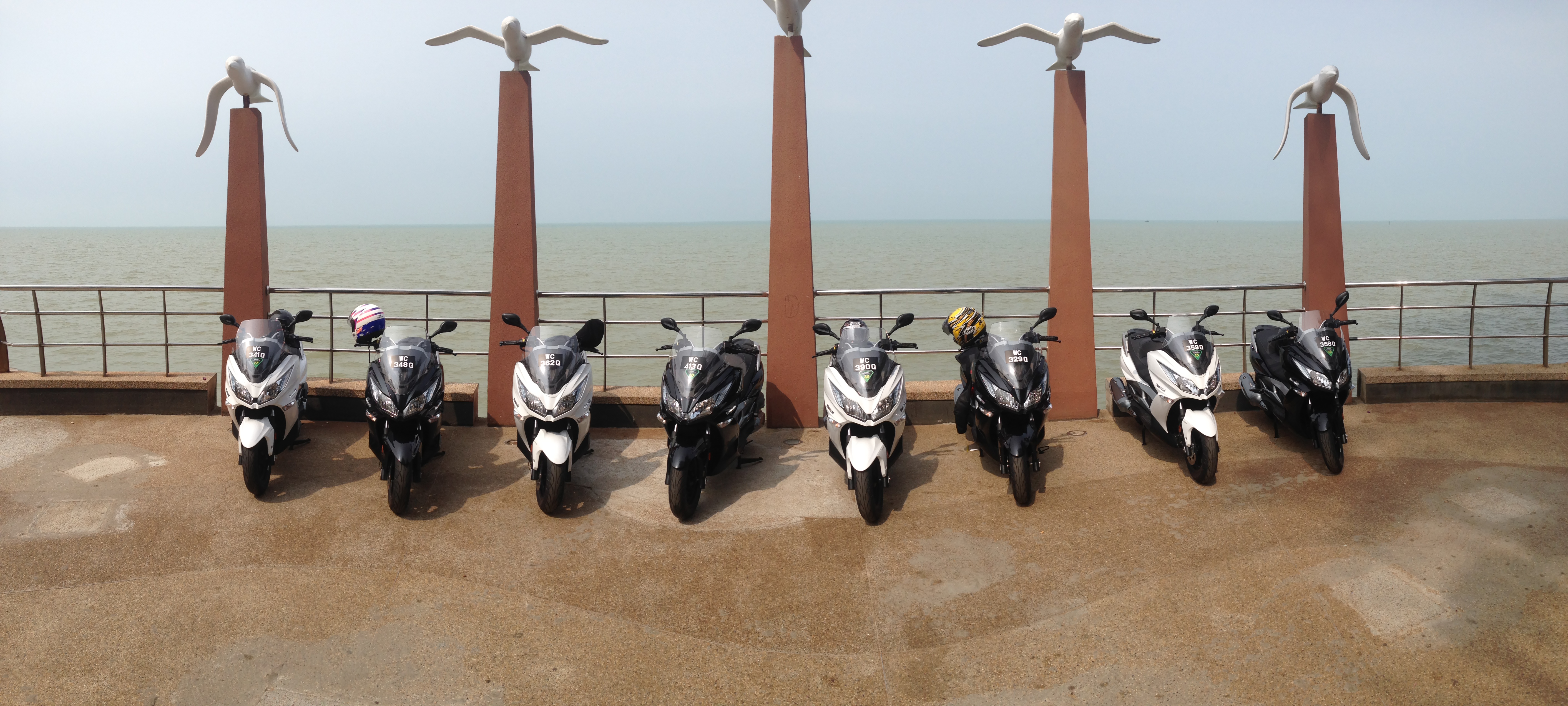
Why J? Of all the letters in the alphabet, why did Kawasaki pick ‘J’ for its latest 300cc offering in the booming scooter market? Well, the ‘J’ in J300 stands for ‘Jyounetsu‘, which translates from Japanese to the word ‘Passion‘, according to Mr.Fukumoto, head of the KHI (Kawasaki Heavy Industries) design team that penned the J300.
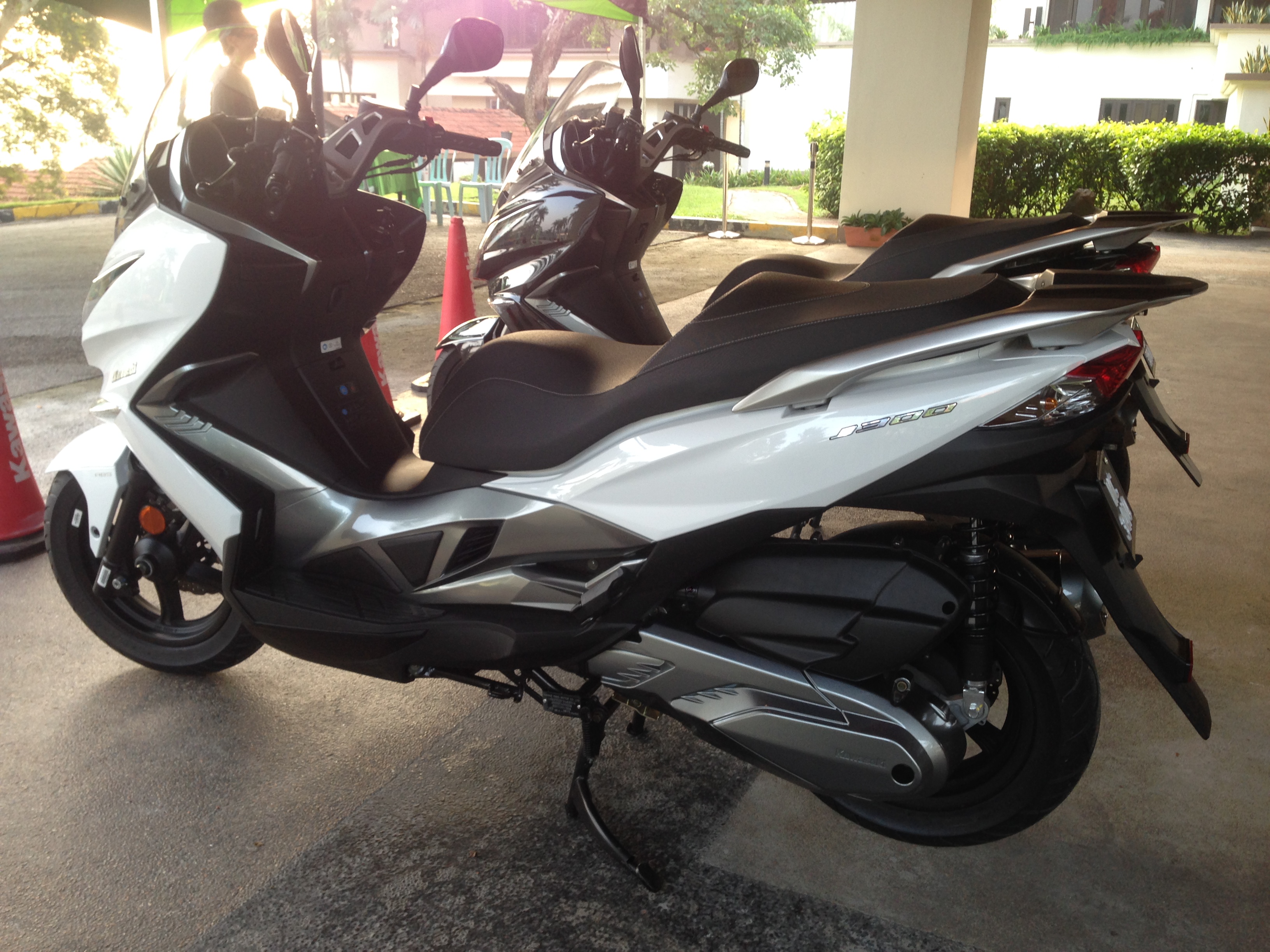
The J300 represents something new for official local importer Kawasaki Motors Malaysia Sdn. Bhd.(KMMSB), as it’s their first foray into the growing popularity of the scooter market. From the outset the new J300 scooter looks every bit like the something that would come from Kawasaki. There’s a familiar ring to its styling and design; it’s unmistakably a Kawasaki. That’s really quite a feat truth be told, because scooters – apart from Vespas – seem to all look alike these days.
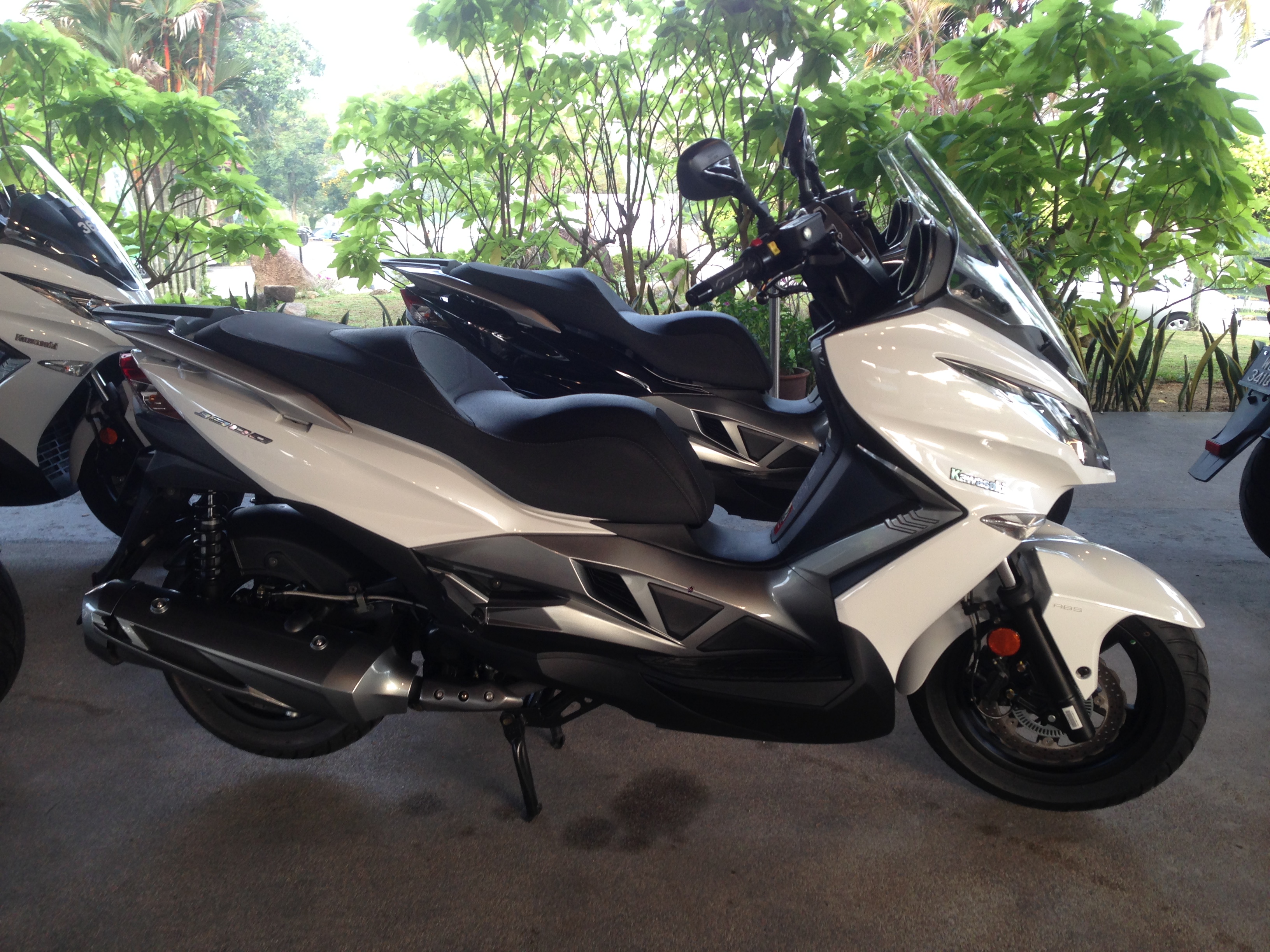
While it may be a subjective matter, I find the styling of the J300 absolutely spot-on. The aformentioned ‘familiarity’ stems from the fact that from the front the J300 looks very much like a sport-bike from Kawasaki, case in point the GTR (below, left), note the familiar ‘face’?
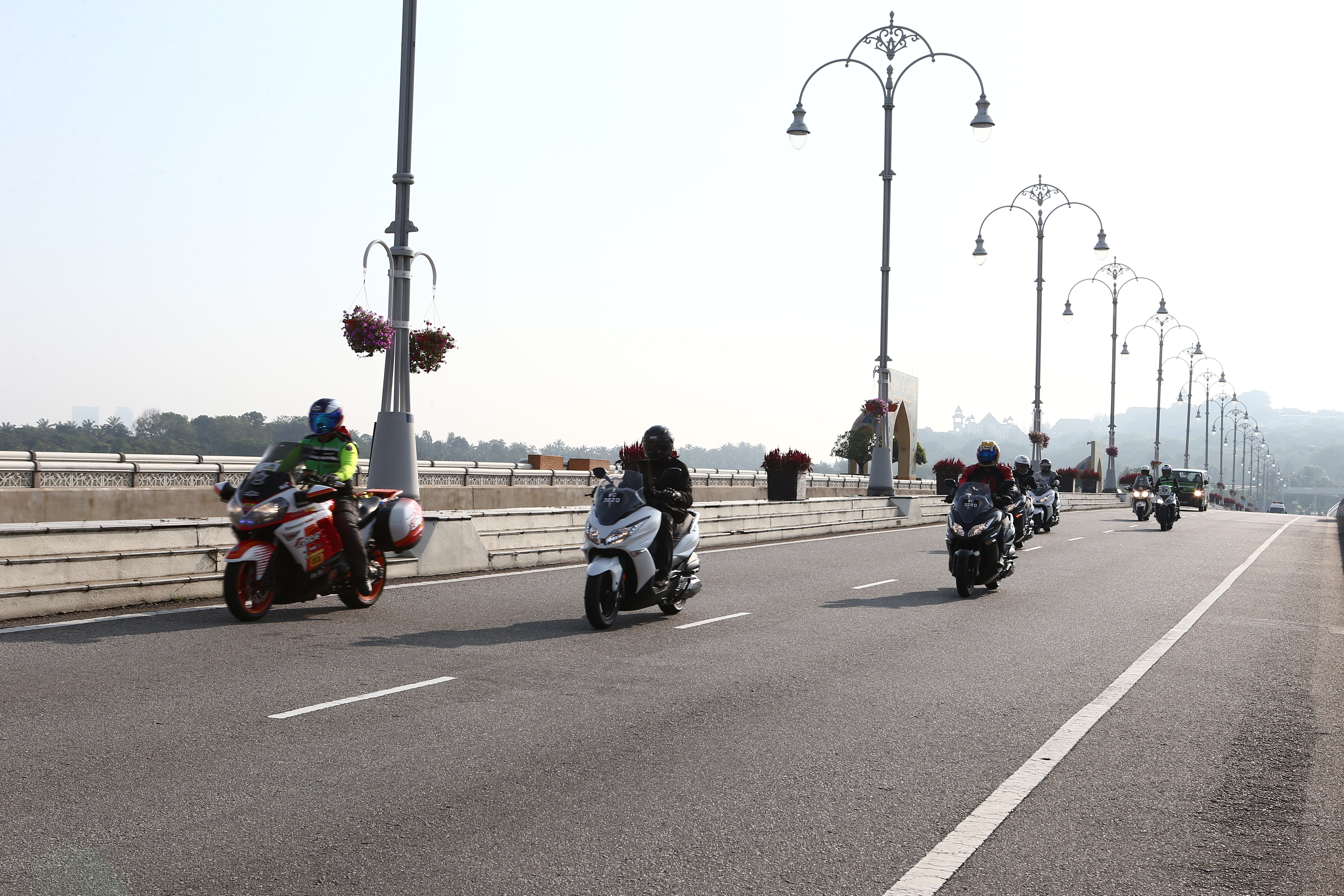
I was in a unique position to review the new J300, seeing as how my daily-commuter is also a scooter, a SYM 200. Needless to say I was eager to swing a leg through the J300, which for all intents and purposes should also be the ideal daily-grind commuter for those willing to give up a few creature-comforts in return for no jams, no tolls and easy parking.
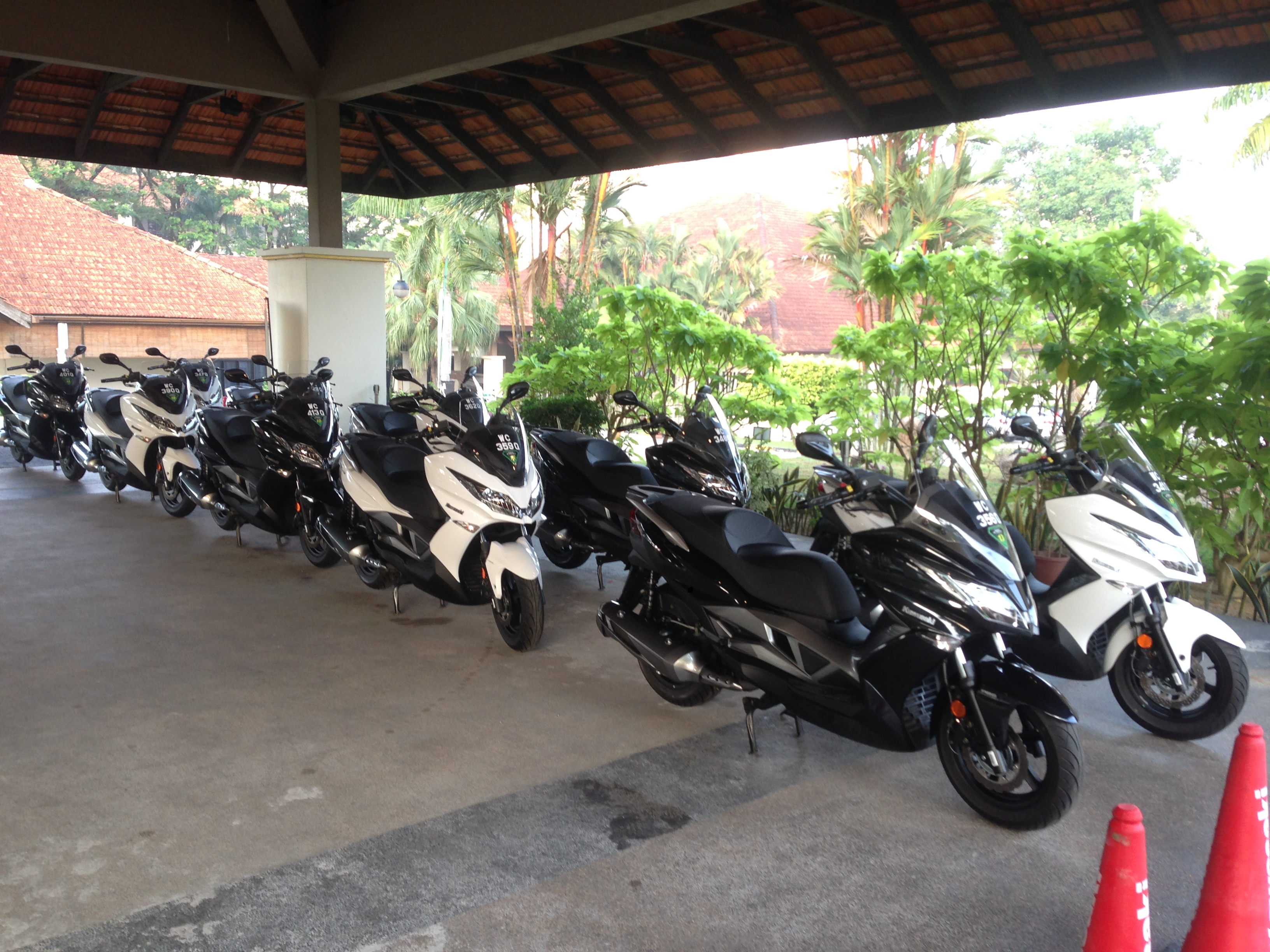
Now in terms of size, the J300 strikes a good balance between smaller scoots like the Modenas Elegan 150 and the gargantuan SYM400i. It’s a go-between that should suit the average sized rider anywhere from 5’5″ to 5’10” in height. Unfortunately, anyone over 6-foot tall might find the riding position a bit awkward, and I found out why almost immediately.
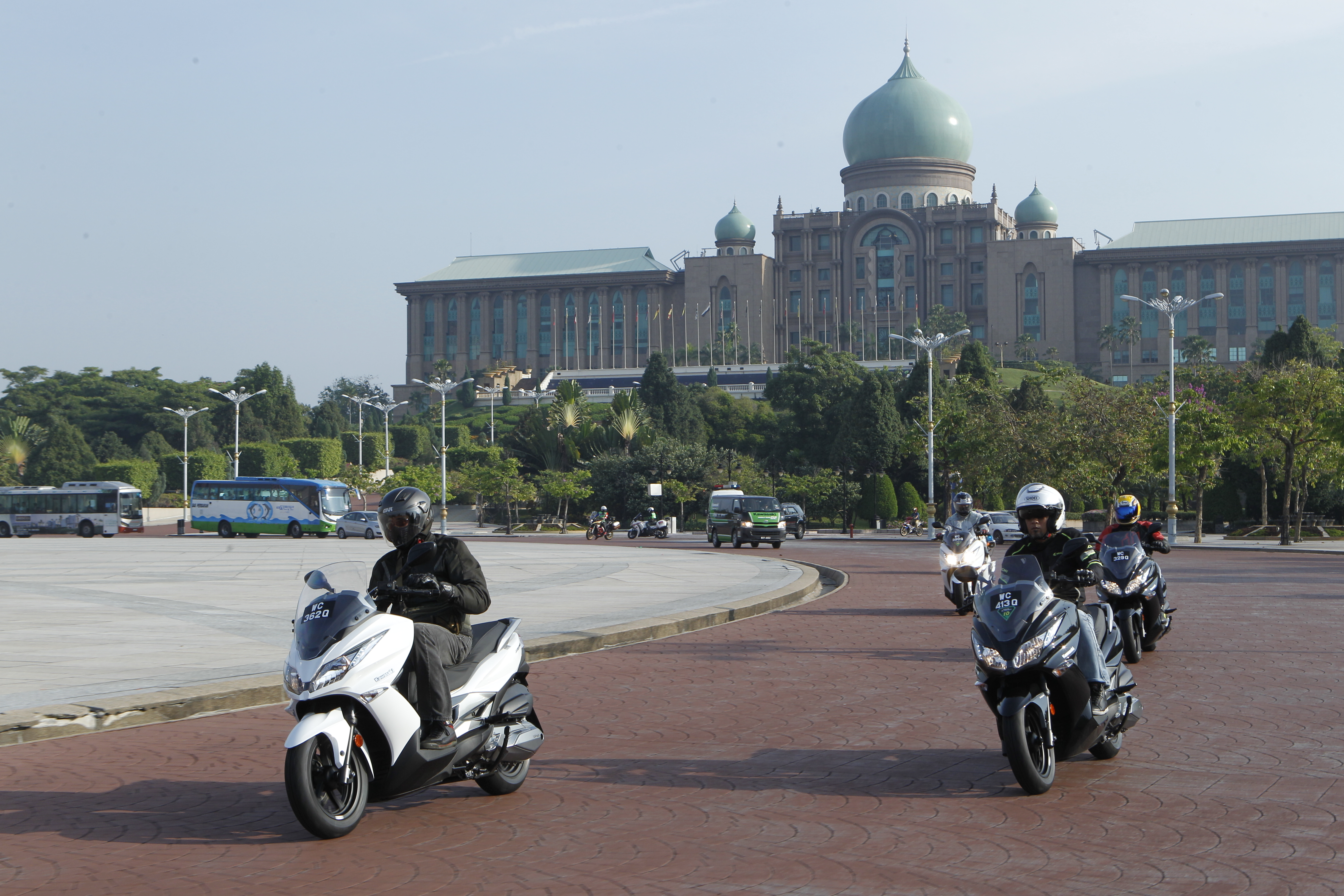
Unlike some scooters (like my aforementioned SYM200), the J300 does not allow the rider the option of placing his/her feet forward up against the back-end of the fairing where typically a secondary foot-rest would reside. There’s only one foot-position, flat-on-the-floor. Coupled with the surprisingly low seat-height, it makes for a rather ‘perched’ riding position for anyone with long legs, as you can see in the photo above, that’s me on the left on the white J300.
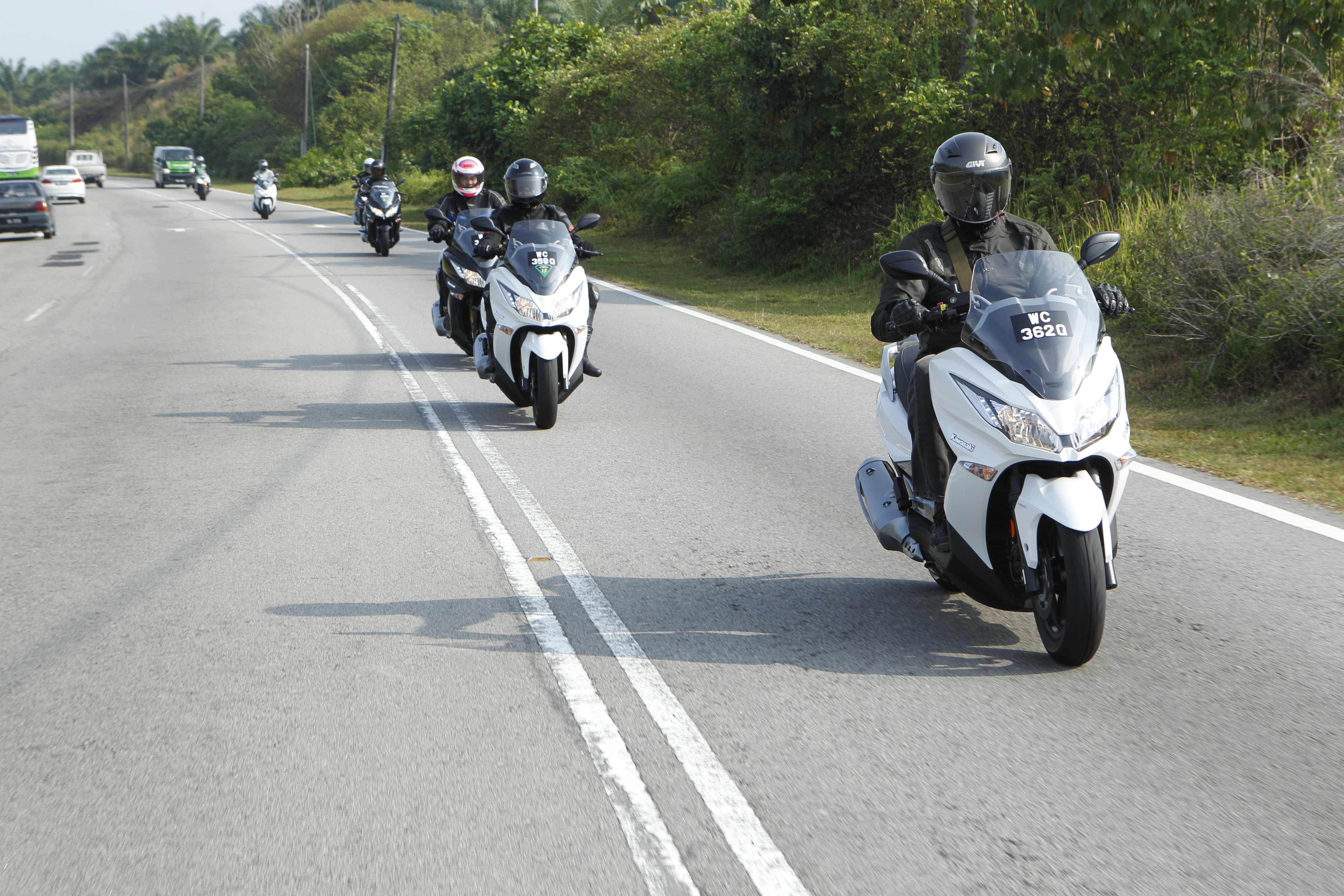
I thought it was just me, but apparently quite a few of the other bike journos on the ride that day mentioned the same thing. Perhaps a higher seat option may solve this.
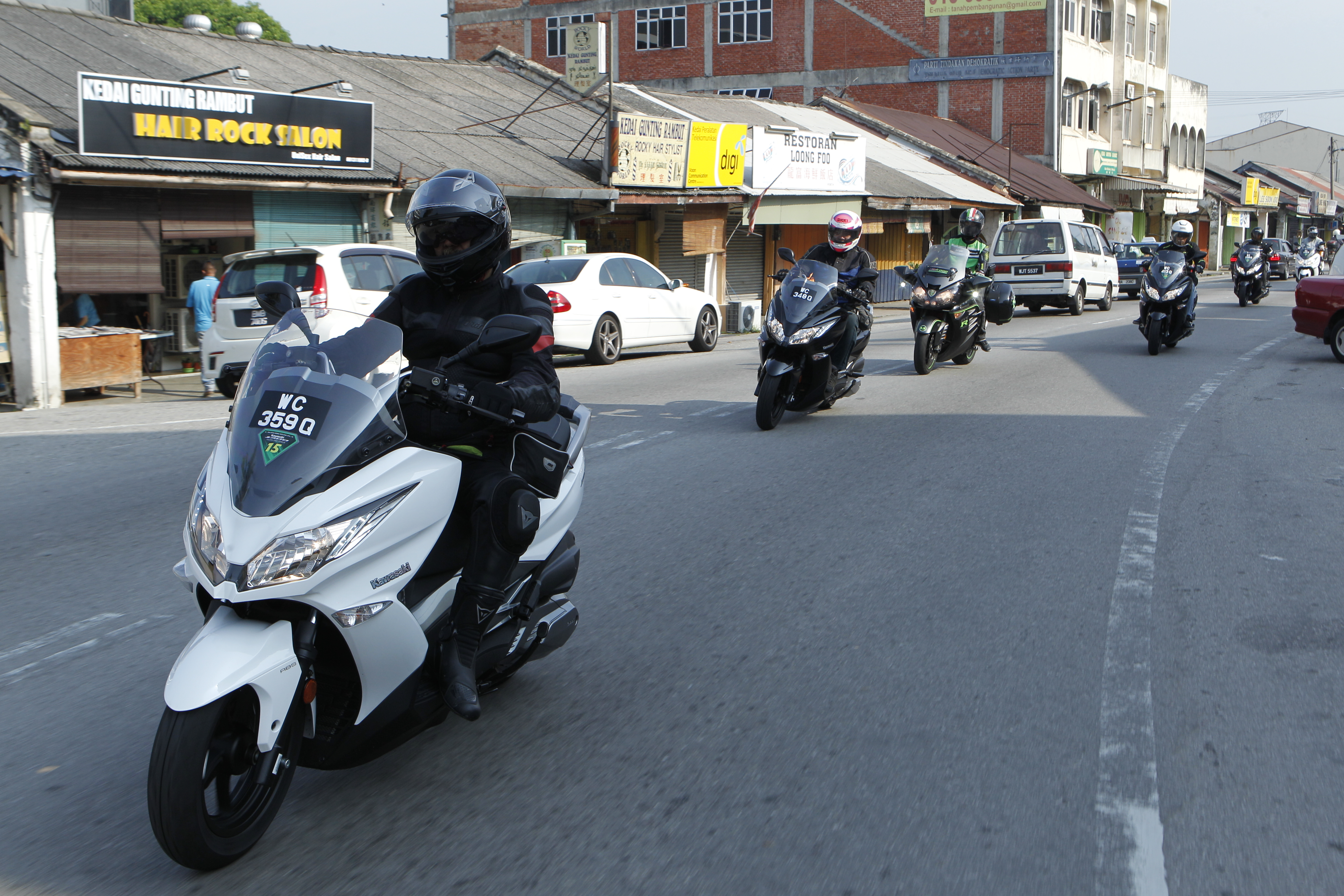
Grab one of the two brake levers – as usual there are no gears to engage since the J300, like all scooters, runs on a CVT transmission – thumb the started button and the scoot bursts to life, settling to a distinctive ‘purr’. Pick-up from a standstill as expected is very good, thanks to the smooth CVT with a centrifugal clutch. It’s a very linear arch of acceleration that’s smooth all the way to its top-speed, which hovers around the 150kmh mark.
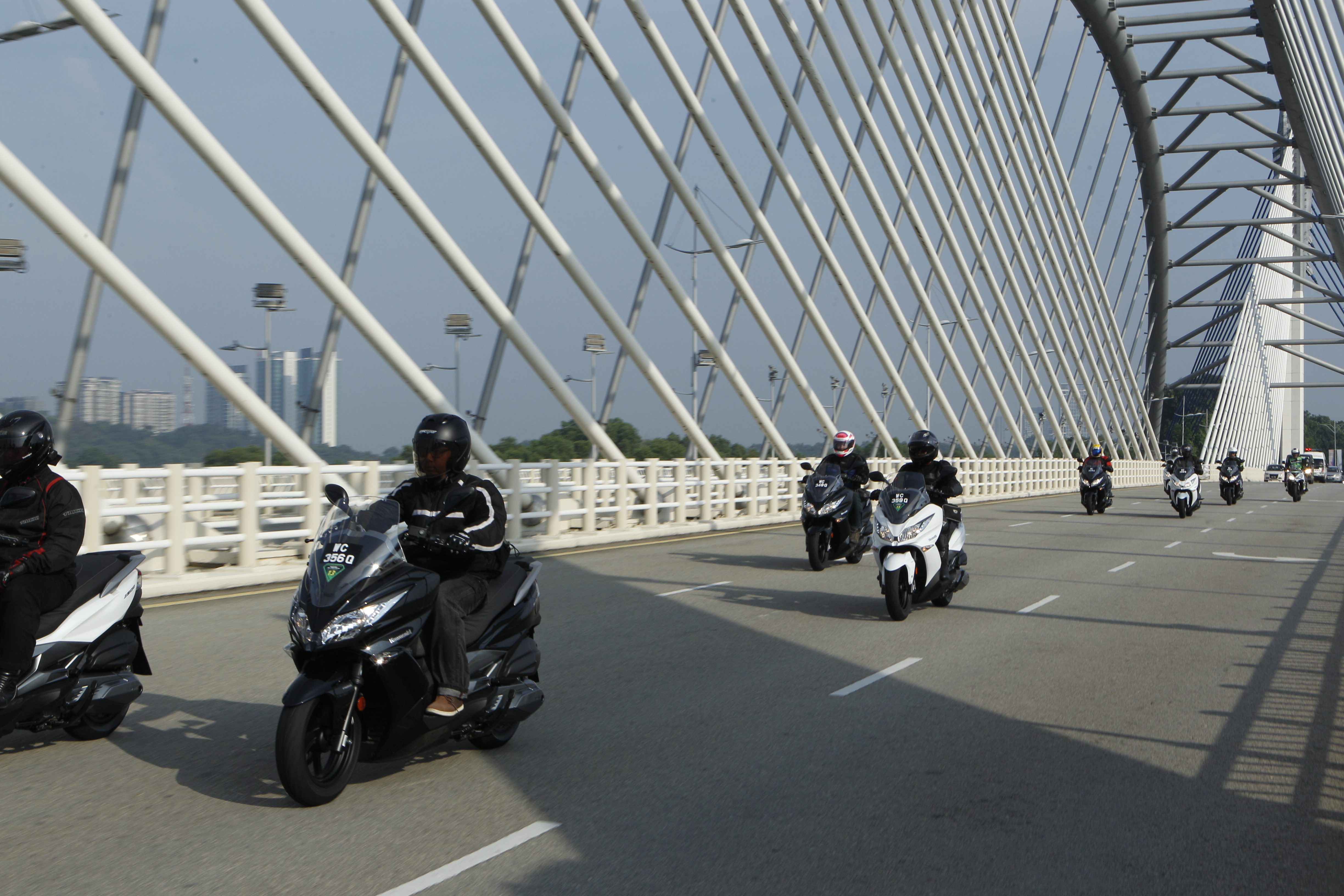
While speeds like that are never a good idea on a scooter, I found that the sweet-spot is to cruise between 100kmh and 120kmh. Stopping power comes by way of Kawasaki’s trademark (single) 260mm ‘petal’ disc up-front and 240mm disc in the rear, and the good news is that the J300 is equipped with ABS.
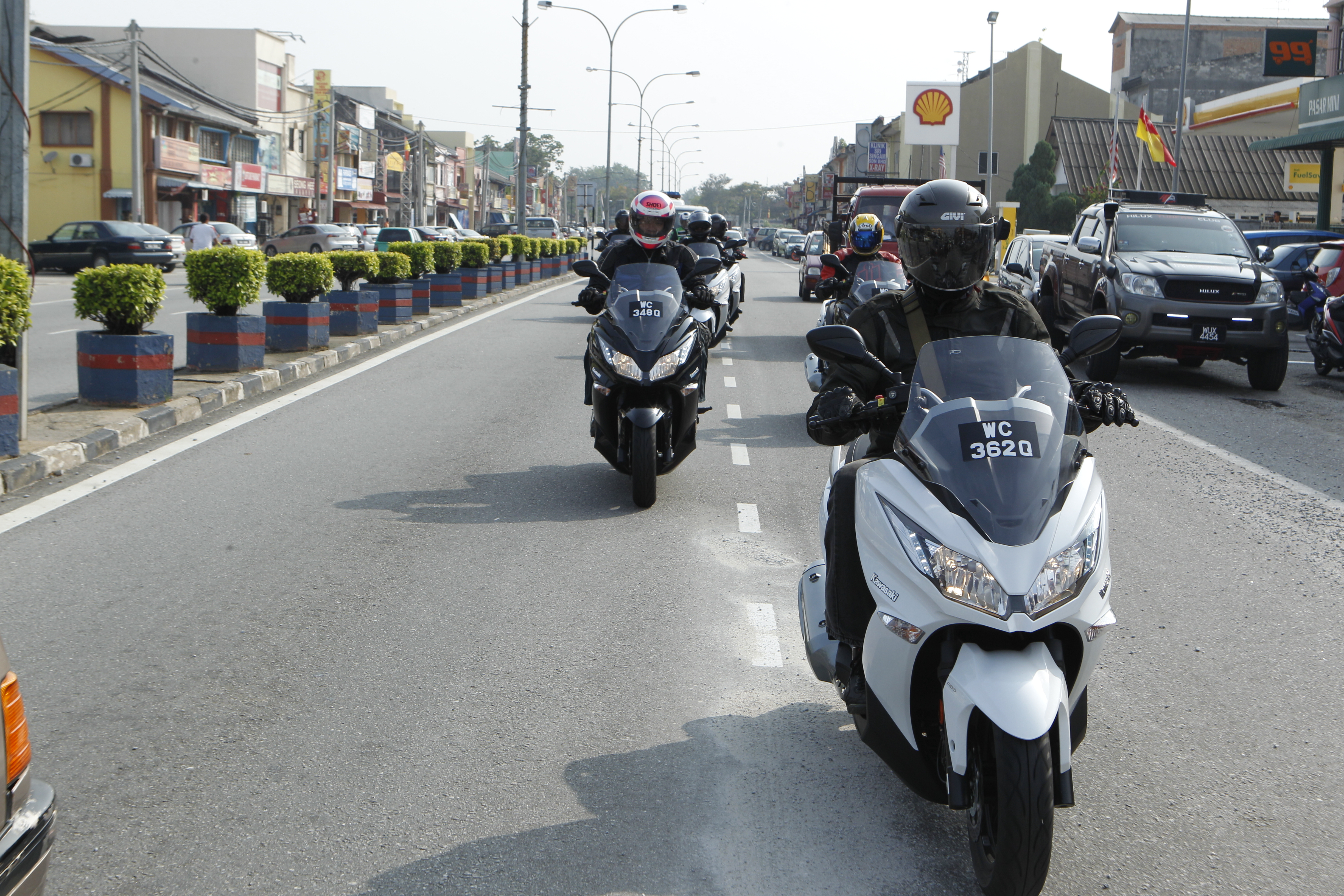
ABS on a motorbike has always been a bane of contention, however, on a scooter that doesn’t have the luxury of engine-braking via ‘dropping gears’ rapidly, ABS is a God-send. However, not once did it activate during this test ride, seeing as how, the braking system on the J300 is more than adequate to bring the bike to a complete and sure-footed stop. I’d venture to say that the braking system is over-engineered for a relatively ‘light’ scooter as this.
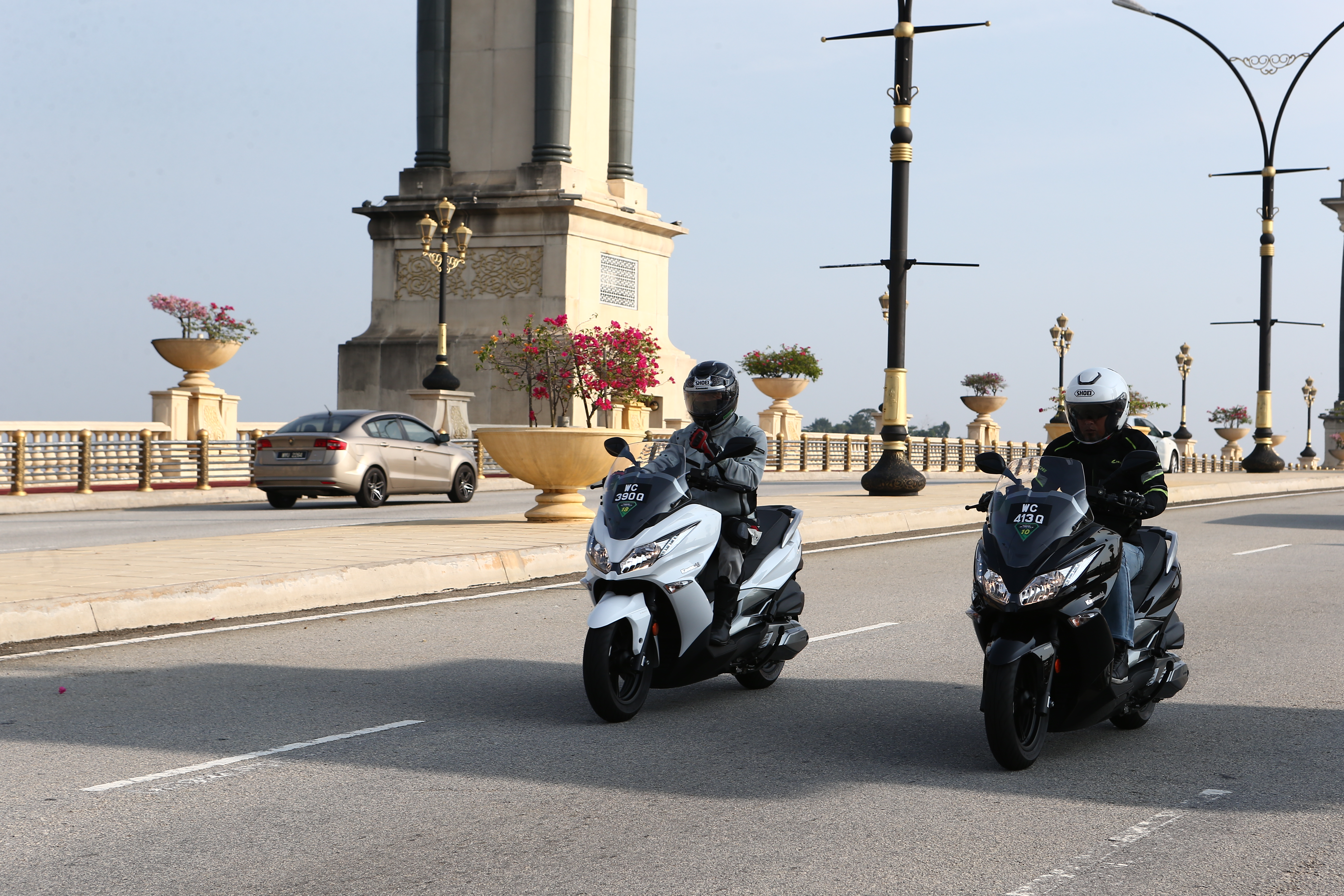
While not earth-shattering, power from the J300’s 299cc, liquid-cooled, SOHC engine with four valves was quite decent, translating to 27.2 hp @ 7,750rpm and 29Nm of torque @ 6,250rpm on paper. Remember, this is a scooter, despite looking like a superbike, so all-out power is not the name of the game here.
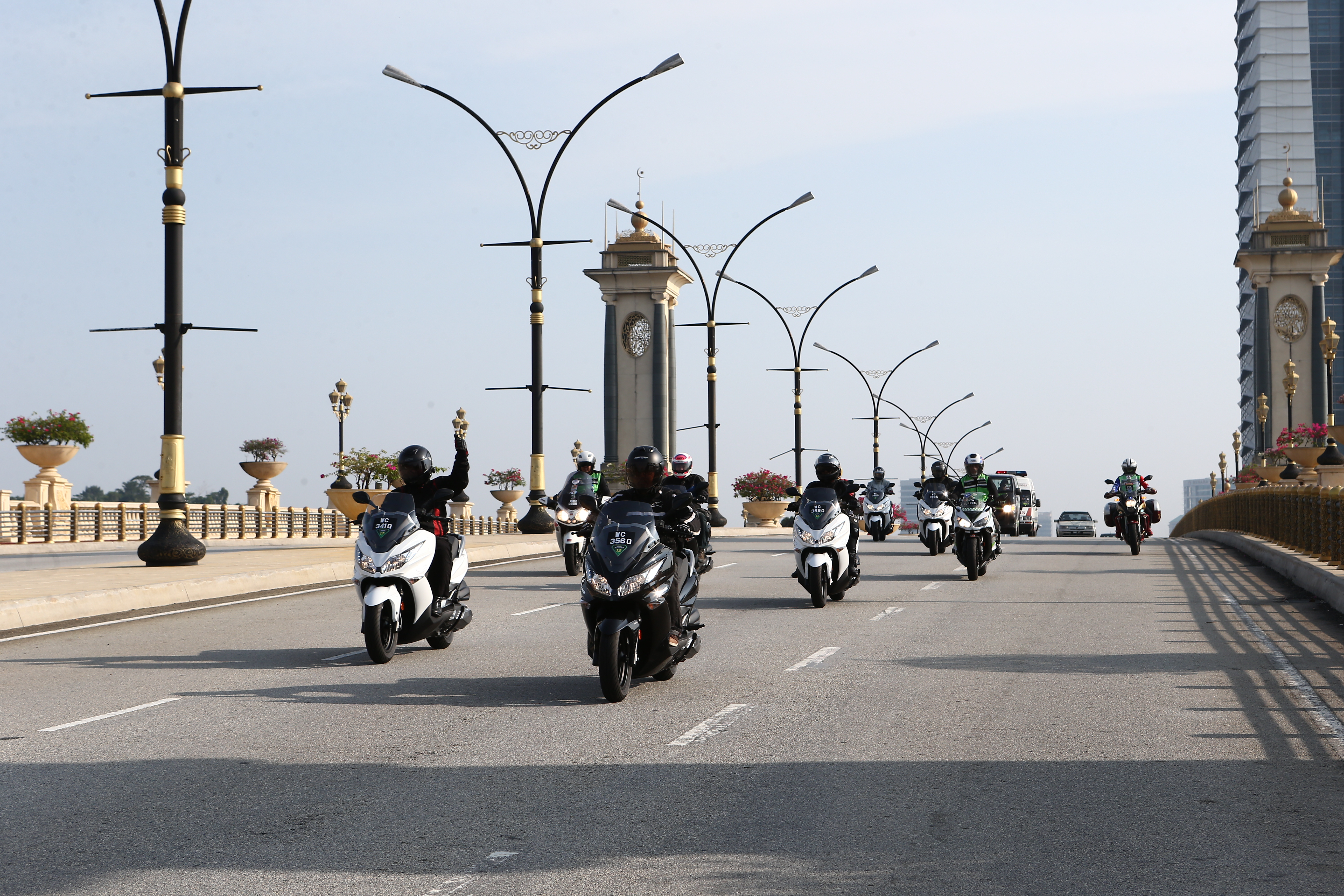
Instead, what I can say is this, the J300 represents the kind of daily-commuter that one can really get used to. It has a very comfortable (albeit low) seat, ample storage under that seat (fit a proper sized rear top-box and it becomes a ‘Scootourer’ instantly) and has the kind of looks – not to mention manufacturer warranty and backing – that makes it a very strong proposition for anyone looking to get into the fuss-free world of scootering.
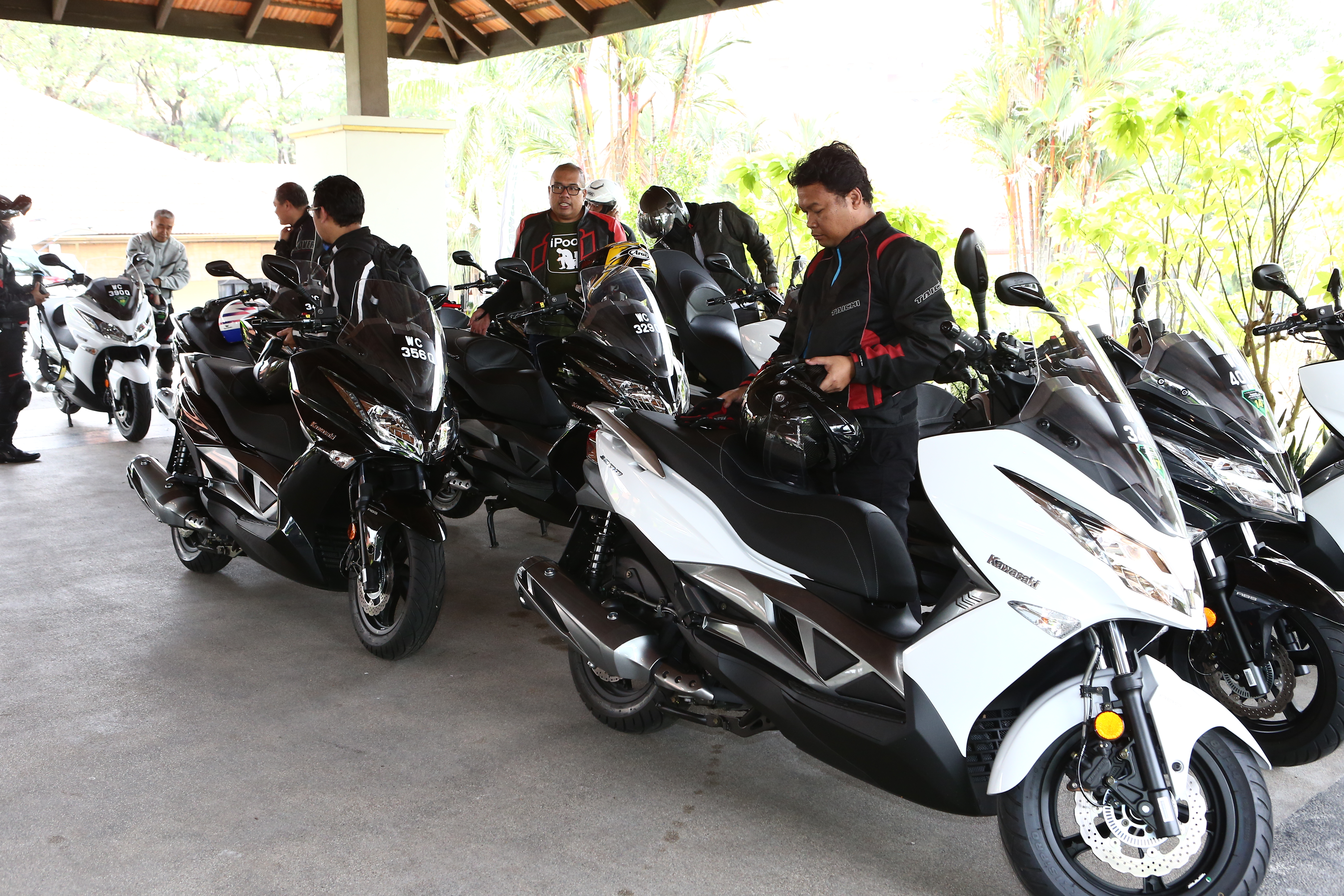
Unfortunately though, one of its main drawbacks is its price. I was hoping KMMSB would be able to keep its OTR price below RM30k, but the J300 is priced at RM31,490 with GST. Now for that kind of money, there are quite a few other scooters out there to choose from, and considering the aforementioned SYM400i, which is actually bigger, costs less than RM30k, the J300 is a tough sell. Let’s put it this way, Kawasaki’s own Vulcan S 650 is cheaper.

All-in-all though, looking at the J300 as just a scooter on its own and not taking into consideration the aforementioned factors, there’s no faulting it. It’s a good-looking, smooth and comfortable scooter that’s ideal for urban use, as well as the occasional out-of-town ride. Oh, and one thing worth mentioning, we covered a total ‘loop’ distance of more than 160km during the test ride, and the fuel-gauge didn’t budge, at all. We weren’t exactly hangin’ around either…
So yeah, fun, comfortable AND economical. It’s hard to not like this J300. – CW.
Check out the short introductory video of the J300 done by our friends at Roda Pusing below.
Photo Gallery… (Photos by CW, Shukor Janis, Aiemax & Faisal Shah of www.countersteer.my)
Other posts by Chris Wee

























































